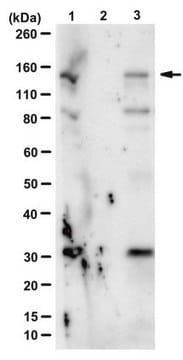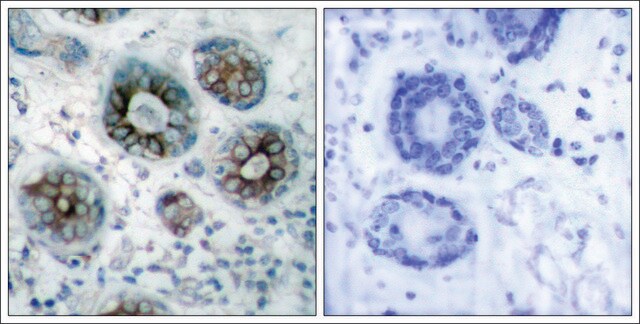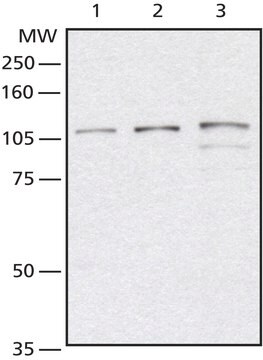05-1076
Anti-c-Jun Antibody, clone 6E4.4
clone 6E4.4, from mouse
Sinonimo/i:
JNK1 alpha protein kinase, JNK1 beta protein kinase, JUN N-terminal kinase, Stress-activated protein kinase JNK1, c-Jun N-terminal kinase 1, mitogen-activated protein kinase 8, mitogen-activated protein kinase 8 isoform JNK1 alpha1, mitogen-activated pro
Scegli un formato
Scegli un formato
About This Item
Prodotti consigliati
Origine biologica
mouse
Livello qualitativo
Forma dell’anticorpo
purified immunoglobulin
Tipo di anticorpo
primary antibodies
Clone
6E4.4, monoclonal
Reattività contro le specie
mouse, human, rat
Confezionamento
antibody small pack of 25 μg
tecniche
immunocytochemistry: suitable
western blot: suitable
Isotipo
IgG1κ
N° accesso NCBI
N° accesso UniProt
Condizioni di spedizione
ambient
modifica post-traduzionali bersaglio
unmodified
Informazioni sul gene
human ... JUN(3725)
mouse ... Jun(16476)
rat ... Jun(24516)
Descrizione generale
Specificità
Immunogeno
Applicazioni
Epigenetics & Nuclear Function
Transcription Factors
Immunocytochemistry Analysis: Confocal fluorescent analysis of HeLa, C2C12, and A431 cells using anti-c-Jun, clone 6E4.4 mouse monoclonal antibody (see page 2).
Qualità
Western Blot Analysis: 0.5-2 µg/mL of this antibody detected c-Jun on 15 µg of NIH/3T3 cell lysate.
Descrizione del bersaglio
Multiple bands may be visible, indicating various phosphorylation states.
Linkage
Stato fisico
Stoccaggio e stabilità
Risultati analitici
NIH/3T3 cell lysate
Altre note
Esclusione di responsabilità
Non trovi il prodotto giusto?
Prova il nostro Motore di ricerca dei prodotti.
Codice della classe di stoccaggio
12 - Non Combustible Liquids
Classe di pericolosità dell'acqua (WGK)
WGK 1
Punto d’infiammabilità (°F)
Not applicable
Punto d’infiammabilità (°C)
Not applicable
Certificati d'analisi (COA)
Cerca il Certificati d'analisi (COA) digitando il numero di lotto/batch corrispondente. I numeri di lotto o di batch sono stampati sull'etichetta dei prodotti dopo la parola ‘Lotto’ o ‘Batch’.
Possiedi già questo prodotto?
I documenti relativi ai prodotti acquistati recentemente sono disponibili nell’Archivio dei documenti.
Filtri attivi
Il team dei nostri ricercatori vanta grande esperienza in tutte le aree della ricerca quali Life Science, scienza dei materiali, sintesi chimica, cromatografia, discipline analitiche, ecc..
Contatta l'Assistenza Tecnica.








